Feature Interview with Chris Clouser
October, 2009
1. What was the impetus to write a book about golf courses in Indiana?
I felt that there was a true lack of appreciation for the contributions of Indiana in the world of golf. My goal is to shine some light on the quality golf we have and present it in a format that might encourage people to come see our golf courses.
2. What is the general concept of the book?
The idea behind the book was to spotlight the best public courses in the state and provide some other information that would make the state attractive for the traveling golfer and give them a guided tour of sorts to the different destinations. Each profile gives a little history, some architectural nuances (a nod to the GCA crowd) and some other pertinent information about the course and possible stay and play information.
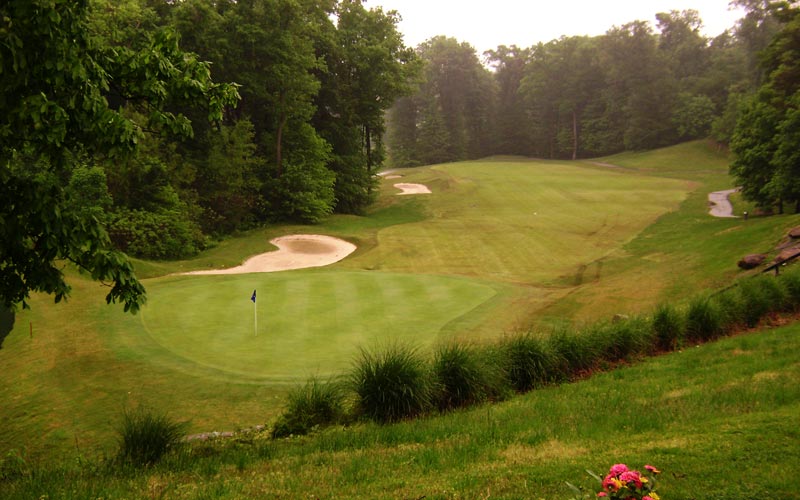
A view from the clubhouse of the final hole at Sultan's Run.
3. Why did you want the book to focus on public golf courses?
I wanted to bring attention to the amount of excellent affordable golf in the state. All but three of the courses mentioned in the book have rates that are below the lowest priced course in the current Golf Digest top 100 publics. If the raters would ever take notice there are several courses in the state that could challenge for top 100 public status in my mind.
4. How did you determine which courses to include in the final product?
There were several things involved in that decision. Geographic balance was a concern, because the few things you hear about golf in Indiana focus on the Indianapolis area. A balance in style and design was essential to avoid focusing too much on what most people associate with Indiana golf, Pete Dye and his courses. Also geographic variety to show the world that Indiana is not a flat state throughout. But I also wanted to make sure that we spotlighted the best and most prominent courses in the state as well as a few personal favorites that mean something special to me. It was tough to draw the line at the main 35 profiled and the other 15 mentioned.
5. Why is the history of golf in Indiana not more widely recognized?
Basically because Indiana has not held a lot of national or major championships. Crooked Stick has started to change that through their efforts recently, but aside from that most people only think of Indiana as having a few Pete Dye courses and that’s about the extent of it. Truth be told, there have been several people that have had a huge impact on the history of the game in America. Also Indianapolis has one of the longest histories in the country with municipal golf. Not to mention one of the first true golf destinations in French Lick, perhaps the most important golf course in the state from a historical perspective. I tried to recognize a few great golden age courses in the book so that history would be represented.
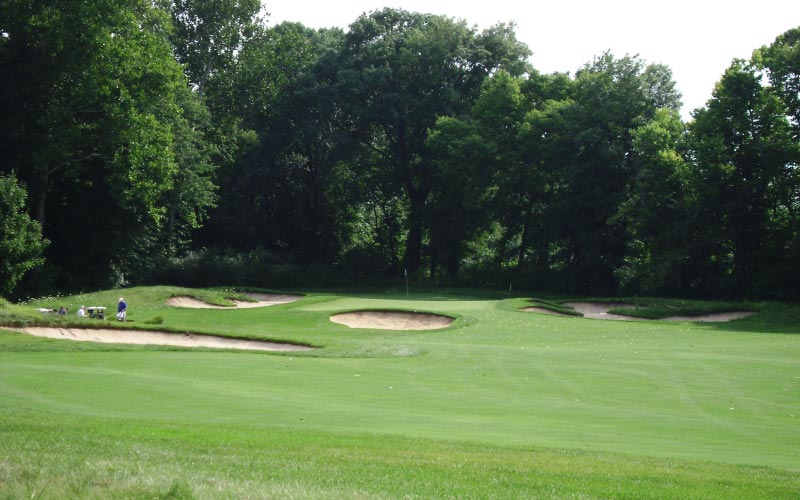
The excellent par four eleventh at Prairie View.
6. Who were some of the “Golden Age†architects to have worked in Indiana?
The primary person was Bill Diddel. I’ve heard estimates that he was involved in almost 200 courses around the state. I touch upon his impact in the book. William Langford did several courses around the state as well, mostly in the northern part of Indiana. Donald Ross worked on three layouts, including his French Lick course. There were some efforts by Willie Park. But most of the golf courses built in that time frame were either homegrown efforts or were touched by Diddel.
7. Why has the modern era of golf architecture in Indiana been so good?
I think the ability to attract almost all of the main architects of this era is the main factor, as well as some not so well known personalities. There have also only been a relatively few notable private courses, so most of the work has been on the upscale public side of things. I think the other major influence is that Pete Dye is here and anyone that designs a course in Indiana knows it better be good because it will ultimately be compared to something he has done in the area. That competition has been a key point to the quality I believe. Plus whatever people may think of a certain designer, these guys design very good stuff for the most part.
8. What was the course that most exceeded expectations in your traveling the state?
Coyote Crossing in Lafayette was easily the most impressive to me. I went there expecting a nice layout, but I think the way Hale Irwin and his team laid out the course was just about perfect. They used every movement in an exceptional manner while also making it feel like they moved very little dirt to achieve the final results. Another one that I think highly of is Mystic Hills in Culver. It is one of the few that seems to get better the more I look back at it in my mind.
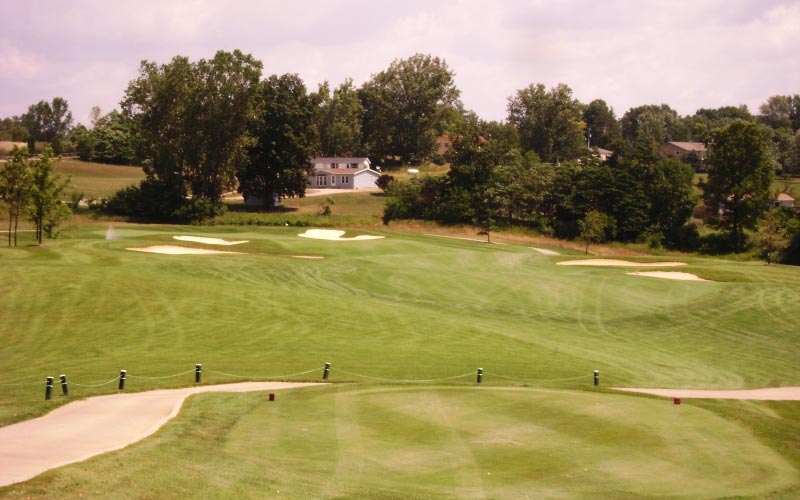
A downhill hole for the second at Glendarin Hills.
9. How is the current economy affecting public golf courses in Indiana?
That depends. I think the resort style courses like Belterra or French Lick will probably be fine because they market to a different crowd than the regular publics. But the regular public courses like a Trophy Club or Bear Slide are doing quite well. The one area I have seen probably some struggle is the higher priced publics like a Prairie View that seem to have plenty of empty parking spots during the peak hours on the weekend. The wild card may be the new Dye Course at French Lick. It is being marketed as a high end resort with that level of price point. If that course can make it long term then it could create an instant demand for golf tourism in Indiana.
10. Is there a part of the state that is lacking in quality golf courses?
Clearly the middle eastern part of Indiana is really lacking. This was my stomping grounds as a kid. I’ve played everything in this part of the state so I know. If one could draw a box from I-70 up to Fort Wayne they would find only a handful of places that one would even say are good courses. With the population base declining so much I doubt something will ever be built there.
11. How does the public golf in Indiana compare to the private courses found around the state?
There are a handful of great private courses (Crooked Stick, Wolf Run, Victoria National, Sycamore Hills and possibly South Bend CC) but after that I think you see the public courses start to fall in line. I used to think of those private courses as having a huge lead on the publics but after attending the US Senior Open at Crooked Stick, I am not so sure. I think the overall quality of the course throughout all the holes and the subtle details of a place like that are hard to match but the gap is not as great as I once thought it was. I would argue that the next group of private courses around the state are probably either just equal or even behind the top 10 or so publics around Indiana.
12. If you had to recommend one golf trip for anyone coming to Indiana what would it be?
There are so many that you can choose from if you are looking at a two or three course trip, but if you want something substantial like 5 or 6 courses you have to hit Indianapolis. You can do Purgatory, Bear Slide, Prairie View, The Fort and Brickyard Crossing through the same travel group if you want (Hamilton County Visitors Bureau). Also The Trophy Club is just outside of Indy if you want to squeeze that one in. In that one trip you could hit 6 of the top dozen or so public courses in the state.
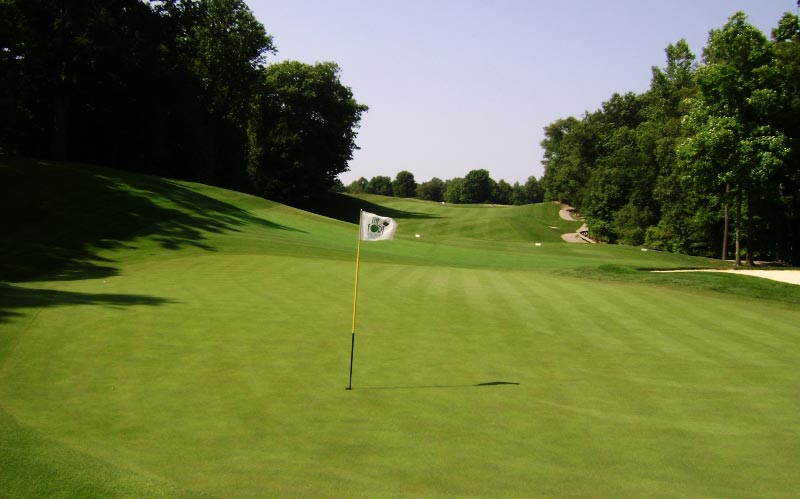
The roller-coaster fourth hole at The Fort.
13. Many people think of Indiana as flat farmland. Discuss the variety of sites throughout the state.
A large part of the state is fairly flat, especially in the part of the state north of Indianpolis until you get up to the Northern edge of the state, north of Rochester. But when one looks throughout the state they will find a large variety of landforms. The southern part of the state is very hilly and even extreme at points, especially in the southeastern and southwestern portions of the state. Courses like Sultan’s Run, French Lick and Grand Oak are prime examples of that. The northern part of the state is much more rolling and courses like Mystic Hills, Glendarin Hills, and Blackthorn provide examples of that style of terrain. Even in pockets such as The Fort inside the Indy city limits extreme terrain can be found, just ask anyone that has tried to walk that course or Eagle Creek on the other side of town. But there are more than a few courses laid out over fairly flat terrain, but several of those will stand up to stiff competition around the country. Places like the Trophy Club, Purgatory and Bear Slide come immediately to mind where there is minimal land movement throughout the course.
14. Why does Indiana seem to have a stronger group of public courses than, say, its neighbor Ohio?
To be fair I am not that familiar with the public courses of Ohio, but my guess would firmly be around the fact that so much of the state is composed of small towns. With a few exceptions (Indy, Ft. Wayne and a few other examples) there just wasn’t the high society crowd that required high end private courses to escape from the masses. So public golf was a much more acceptable option. Indiana actually has the fourth oldest municipal course in the country, so the history of accessible golf goes way back for the state. Also, a lot of those people who were involved in that agrarian economy had free time in the summers. But they probably didn’t have the connections or finances to get into the private clubs. So I think the public arena was where the focus was put on the development side. To be fair a lot of the better publics are what many would consider CCFAD type courses, but they have the high quality design that many would associate with a country club and are willing to pay it. So the high end public or semi-private model works really well here, as opposed to the private club model that works better in larger markets.
15. Does private golf in Indiana suffer because of the high quality of public courses there?
I don’t think so. I think that Indiana though just doesn’t have the raw numbers of those golden age courses that everyone knows about. The modern era has seen a shift in that arena though. Sycamore Hills, Victoria National, Crooked Stick and Wolf Run are primary examples of modern layouts that have received national notoriety. Recent designs by Nicklaus and Dye, Sagamore and Bridgewater respectively, have also brought some attention to the state. The private golf in the state is good, but aside from the really elite courses it just doesn’t overpower the public option like many other states. The other thing you have to remember is that the boom in public golf didn’t happen until 1990 or so, prior to that I don’t know that anyone would consider Indiana a bastion of high quality golf of any type.
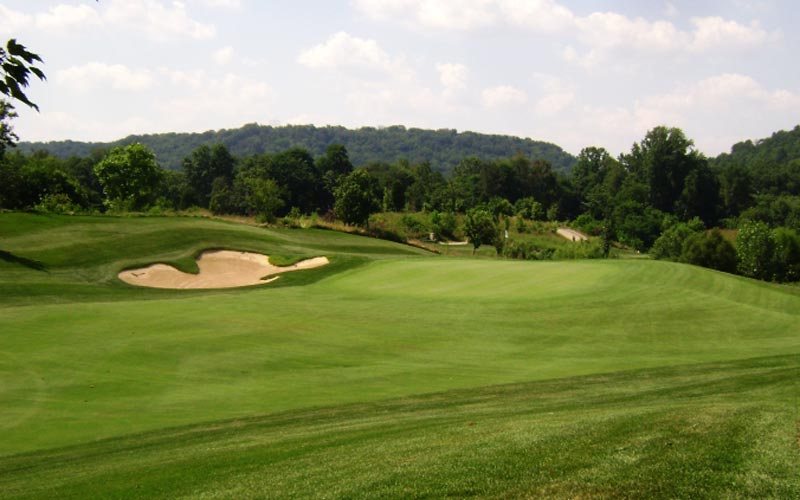
The sixteenth green at Belterra.
16. What is your take on the expansion of Harrison Hills from nine to 18 holes?
I never saw the course before the nine hole addition by Tim Liddy, so I can’t comment about how it was before. But having been there a couple of times since the addition I can see why they did it. It basically makes them a much more marketable course to other people in the area and around the state. Let’s face it, no one is going to go to Attica to play 9 holes unless you are a GCA member. Since then the course has been able to tap into travel packages with the Lafayette courses and other advertising. Plus it was recently rated the #3 public course in the state by one publication, so from a business standpoint it made a lot of sense and is paying dividends. Now what do I think of the holes themselves? I think they really look different from the original nine, but it is hard to compete with what was there. Those Langford holes are unlike anything else in the state, especially that stretch of 13 through 16. I do think there are some really good holes though among Liddy’s addition. Three is a fine short par four. The ninth has a great design and the twelfth is a great homage to the Langford style.
17. Are there any exciting new public courses in Indiana in the works?
As you can guess there isn’t a lot of development right now in Indiana, but the new Dye course at French Lick opened this spring to a lot a fanfare. Having seen the course before it was completed I can say it is breathtaking from an eye candy perspective. It has some of the best views I’ve seen, whether it be Indiana or anywhere else that I have played. Probably the only other noteworthy work was a renovation at Zollner Golf Course in Angola that could be quite interesting.
18. Why was the recent U.S. Senior Open at Crooked Stick so well attended?
Several reasons for that. Hoosiers love golf being the primary of those. Another is that Indianapolis is the most overlooked sports town in the country. We are the home to more amateur sport organizing bodies than any other city in the union. We continually host nationally prominent events. The month of the Senior Open was in the middle of four straight weeks of significant events. Indy hosted the national swimming & diving championships, an ATP tour event, the Senior Open and the Brickyard 400 in consecutive weeks. Another prime reason is that the people in the Indy area love to volunteer for these type of events and take pride in hosting them. I also think the venue is a part of it. Several people wanted to see Crooked Stick that normally don’t get to, the Stick is the epitome of championship golf in Indy. Casual golfers know about it because of past championships, unlike a Victoria National or Wolf Run which most people don’t even know exists. Plus the weather was about perfect for the event. Probably another reason is that many people here have followed a lot of those golfers and feel some sense of connection with them in some way, unlike the regular tour. It will be interesting to see if the 2012 BMW gets the same level of attendance.
The End








